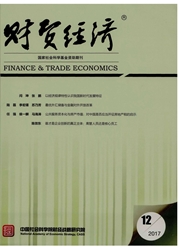

 中文摘要:
中文摘要:
为量化分析经济政策不确定性对我国宏观经济波动的影响,本文在一个基于标准宏观经济理论的SVAR模型中,构建了一种由常规符号约束条件和特定零约束条件相结合的混合识别法,以同时识别出政策不确定性冲击和需求冲击、供给冲击、货币政策冲击等三种传统结构冲击。研究发现:(1)经济政策不确定性冲击并不是中国经济波动的主要因素,但它表现出类似于负向需求冲击的特征,且呈现通胀效应强于产出效应的中国特色;(2)样本期内,需求冲击是驱动中国经济波动的首要因素,供给冲击次之;(3)供给冲击是引致价格水平上涨的主要原因,货币冲击起到“推波助澜”的作用,而政策不确定性冲击则抑制了价格水平的进一步上升。本文研究为有关经济政策不确定性的宏观经济效应讨论提供了来自最大发展中国家的经验证据,也为“宏观经济政策要稳”的政策基调提供了支持。
 英文摘要:
英文摘要:
To investigate to what extent economic policy uncertainty affects China's macroeconomic fluctuations, we construct a mixed identification scheme that combines some regular sign restrictions with zero restriction, which simultaneously identifies economic policy uncertainty, demand, supply and monetary policy shocks. Impulse response analysis shows that economic policy uncertainty shocks exhibit the characteristics similar to negative demand shocks with inflation effects obviously stronger than output effect, whereas the effects produced by the three conventional shocks match the mainstream macroeconomic theory. We also calculate historical decomposition to assess relative importance of the shocks in explaining some important fluctuations. We find that in the full sample period, demand shocks are the primary driving factor of real output fluctuations, while the supply shocks are in the second position. Supply shocks are the most important driving force of inflation and monetary policy adds fuel to the flame, while economic policy uncertainty shocks exert obvious inhibition on the inflation. The academic contribution of this paper is showing some robust empirical facts of EPU's effects on macroeconomic fluctuations from the biggest developing country, the practical implication of our research is to provide academic support for the decision of "macroeconomic policies should keep stable"
 同期刊论文项目
同期刊论文项目
 同项目期刊论文
同项目期刊论文
 期刊信息
期刊信息
